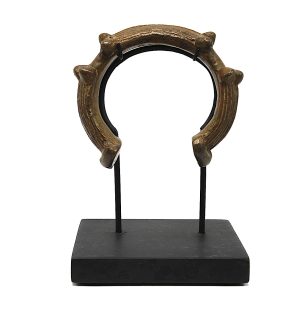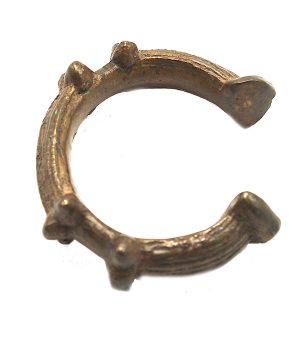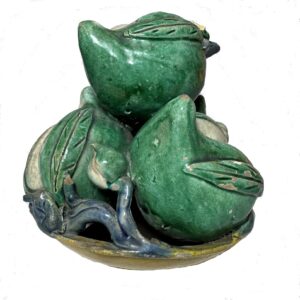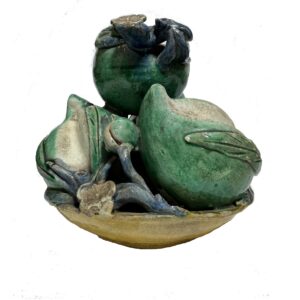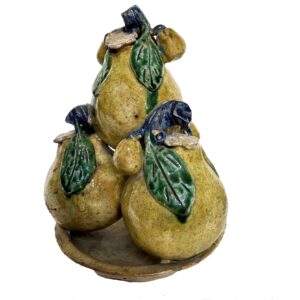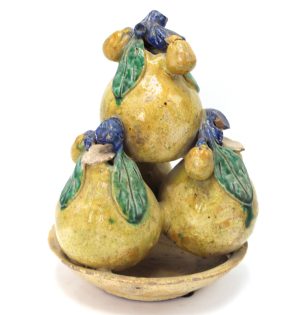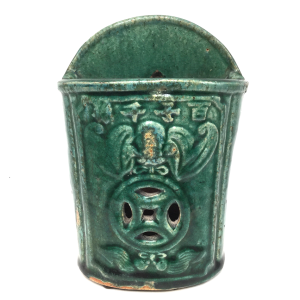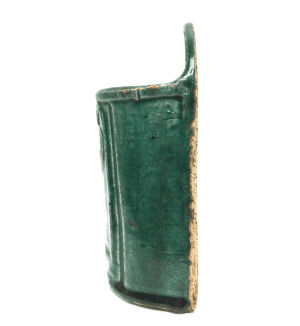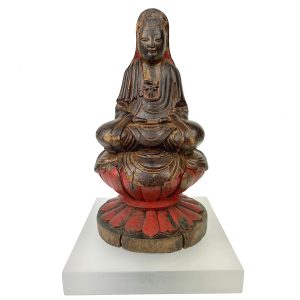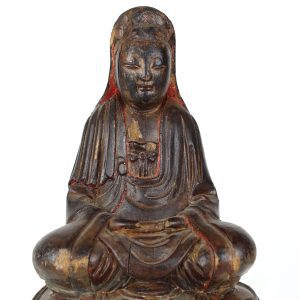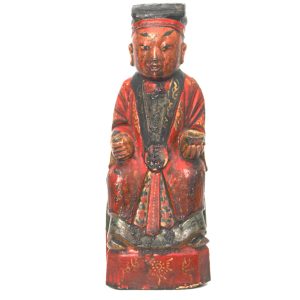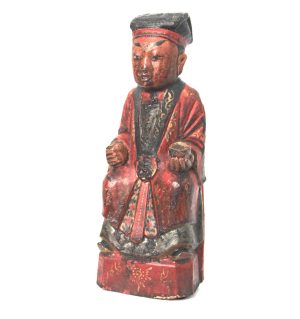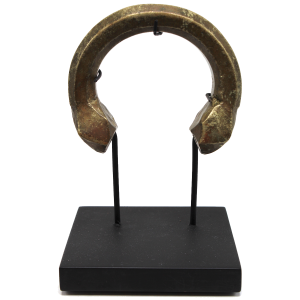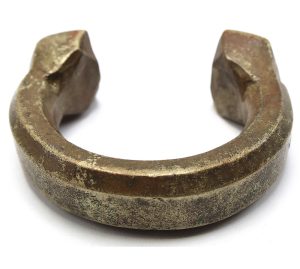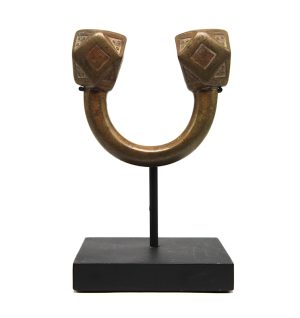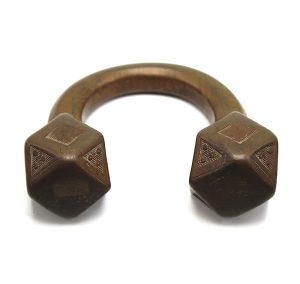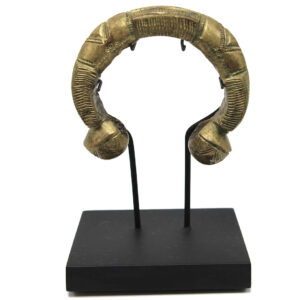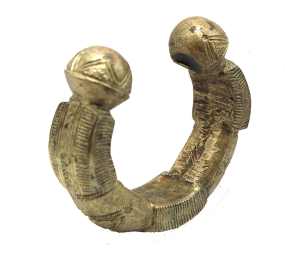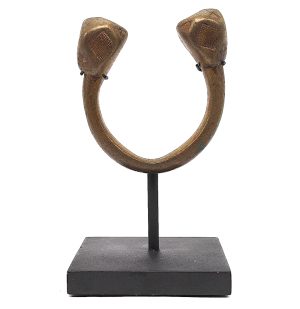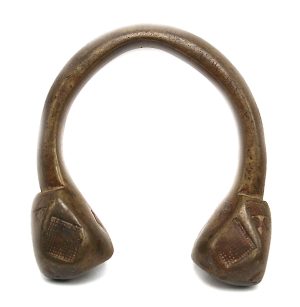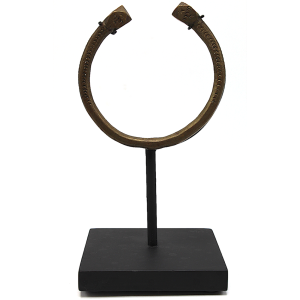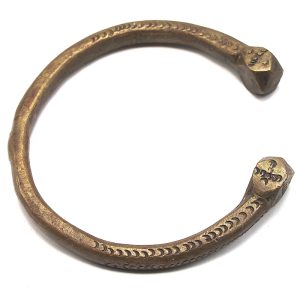Showing 49–60 of 89 results
-
Sale!


$195.00 Original price was: $195.00.$155.00Current price is: $155.00.
H: 2.75” W: 3.625” Thick: 1” Circum. 9.375” | FREE SHIPPING IN CONTINENTAL u.s.
Antique 3-sections Senufo manilla with incising, raised bosses and flattened discs at ends. Very heavy, used to store wealth, trade for purchases, bridal dowries or ceremonies. Fine patina, wood and metal stand.
-
Sale!


$450.00 Original price was: $450.00.$295.00Current price is: $295.00.
Ht: 5.5” Dia: 6” | FREE SHIPPING WITHIN CONTINENTAL U.S.
Shiwan stoneware peaches and lotuses on footed bowl auspicious symbols associated with springtime, fertility, long healthy life for many generations and therefore are propitious gifts for birthdays, especially for the elderly.
-
Sale!


$375.00 Original price was: $375.00.$295.00Current price is: $295.00.
H: 8.75″ DIA: 6.75 ” | FREE SHIPPING WITHIN CONTINENTAL U.S.!
Shiwan stoneware glazed sculptures of fruit symbolizing life and new beginnings to place on temple or home altar. They augment plates of fresh stacked fresh fruit to honor ancestors. These pears symbolize long life.
-
Sale!


$115.00 Original price was: $115.00.$95.00Current price is: $95.00.
H: 7.375″ W: 5.125″ D: 2.5″ | FREE SHIPPING WITHIN CONTINENTAL U.S.
Chopsticks are ubiquitous in Chinese culture, and are often included in a bride’s dowry as a wish for a speedy arrival of many sons. This Shiwan ware green glazed wall pocket chopsticks holder has characters wishing for many sons and grandsons and an upside down bat holding a coin for “blessings in front of your eyes.”
Decorative utilitarian Shiwanware pieces are recognized for their fine modeling, vivid expression, and colorful apple-green and drip glazes. Chopsticks were commonly stored in wall pockets with a hole for mounting. Covered with auspicious symbols, they were often part of a bride’s dowry as “chopsticks” is a pun for “speedy arrival of sons.”
-
Sale!


$495.00 Original price was: $495.00.$395.00Current price is: $395.00.
H: 8.675″ Dia: 4.5″ | Free SHIPPING WITHIN CONTINENTAL U.S.
Delicate white robed Guanyin in meditation on radiating lotus throne. Provincial humble, modest, relatable, yet beautiful matronly figure.
-
Sale!


$295.00 Original price was: $295.00.$195.00Current price is: $195.00.
H: 7.25″ W: 2.75″ D :2″ | FREE SHIPPING WITHIN CONTINENTAL U.S.
Colorful Taoist priest carving holding a cup with the Elixir of Life granting eternal life. Red is the color of fu to bring into the home divine favors. Whimsically painted face and raised lacquer decorations, it was consecrated and originally placed on a home altar.
-
Sale!


$295.00 Original price was: $295.00.$225.00Current price is: $225.00.
H: 3.375” W: 3.25” Thick: 1.25” Circum: 5.75” | FREE SHIPPING IN CONTINENTAL u.s.
Large C-shaped Tuareg manilla made from sand moulds, has massive finials with 12 facets with detailed hand-etched and hammered designs including raised circles.
-
Sale!


$325.00 Original price was: $325.00.$295.00Current price is: $295.00.
Ht: 4″ W: 4.6525″ Thick: 1.5″ Circum: 10.5″ | FREE SHIPPING WITHIN CONTINENTAL U.S.
Antique horseshoe shaped Tuareg “King” manilla, magnificent metalwork, 10 faceted flat finial ends with traditional etched and hammered geometric designs, excellent condition, fine patina.
-
Sale!


$295.00 Original price was: $295.00.$225.00Current price is: $225.00.
H: 3.125″ W: 3.125″ D: 0.75″ | FREE SHIPPING WITHIN CONTINENTAL US.
Tuareg horseshoe-shaped manilla with bold hammered and incised decorative motifs unique to individual Tuareg tribes Divided in sections, with etched designs, circular cutouts, ending knot finials. .
-
Sale!


$285.00 Original price was: $285.00.$225.00Current price is: $225.00.
Bracelet H: 3.875” W: 3.5” Thick: 1.125” | FREE SHIPPING WITHIN CONTINENTAL U.S.
Tuareg horseshoe shape manilla with bulbous rounded faceted ends, hand hammered fine details.
-
Sale!


$195.00 Original price was: $195.00.$125.00Current price is: $125.00.
H: 3.5” W: 3.625” Thick: 0.50” Circum. 10.125” | FREE SHIPPING WITHIN CONTINENTAL U.S.
Finely fashioned Tuareg slim circular-shaped manilla bracelet/anklet, hand incised striated decorations, and faceted rounded beads at the open hoof-shaped terminals ends.
-


$195.00
H: 5.25″ W: 4.5″ D: 2.875″ | FREE SHIPPING WITHIN CONTINENTAL U.S.!
This 19th-century miniature wood figure is a finely and whimsically carved portly seated merchant. He is depicted as a Laowai or “old foreigner” with a westernized face and hat and oversized hands placed on his knees. Seated on a platform base, he wears garments reflective of the Chinese culture at this time but wears a hat that is clearly not of Chinese origin. Other indications this charming figure is a foreigner include the roundness of his face, western facial features and oversized hands.
End of content
End of content

